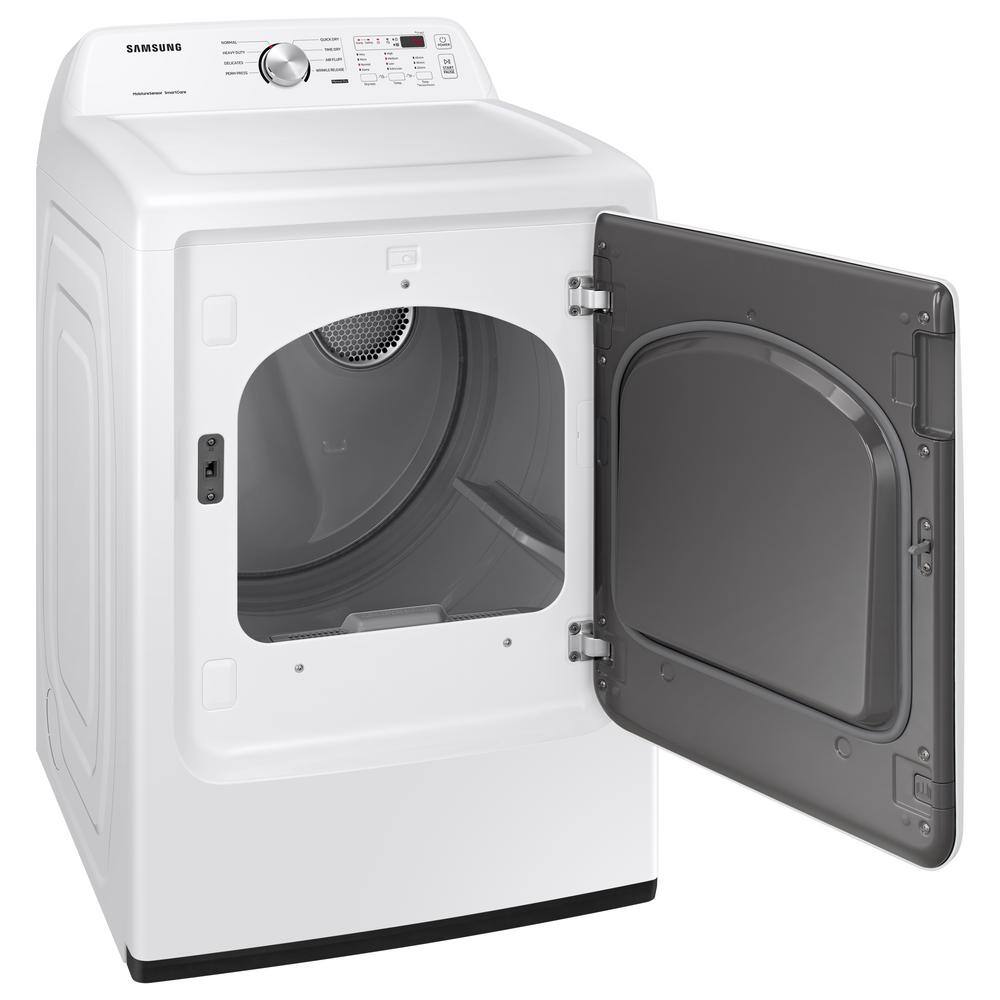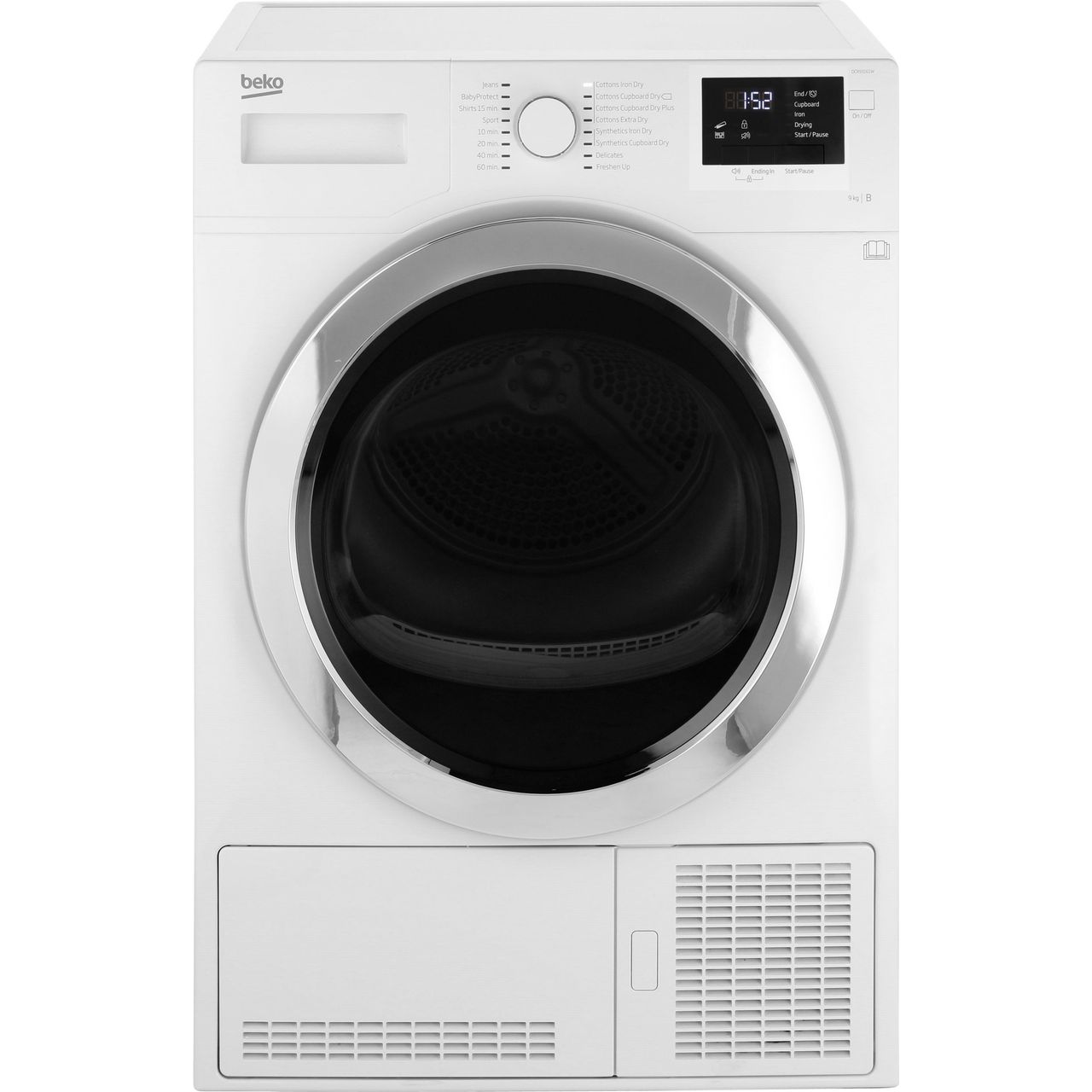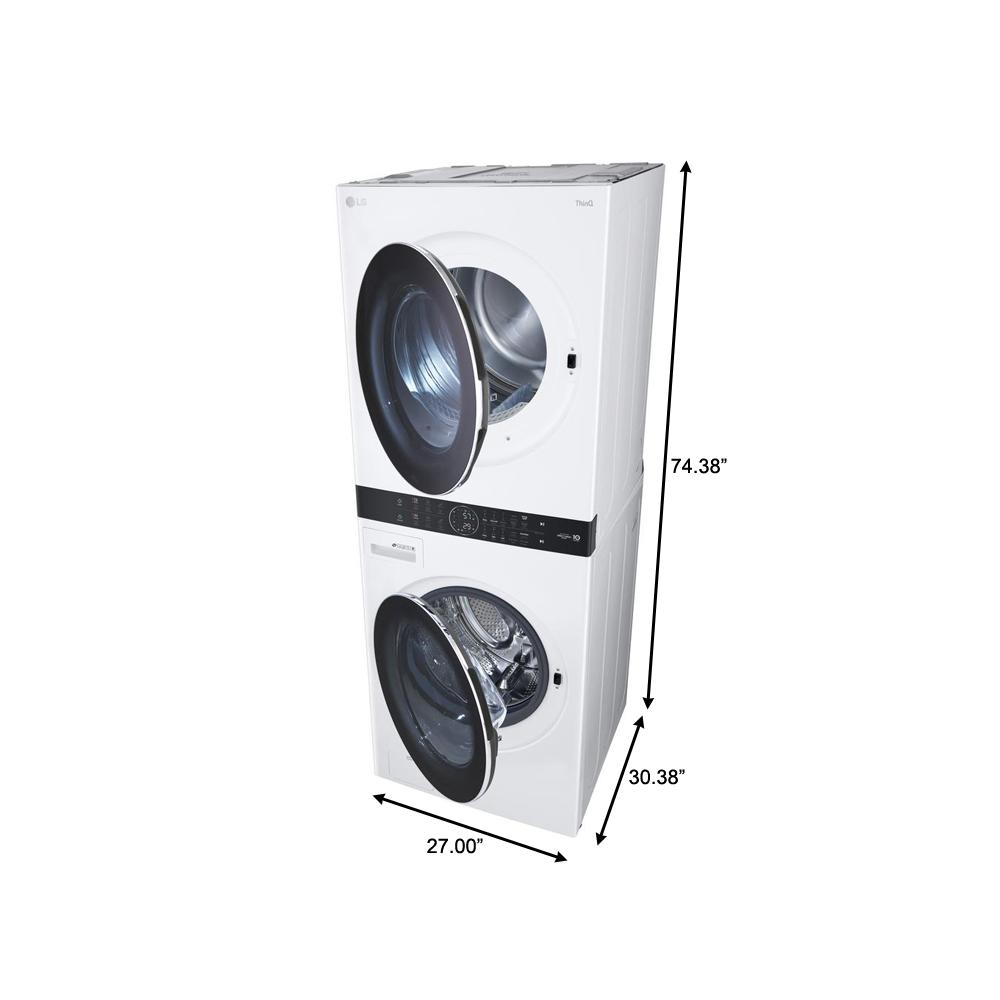Samsung 7.2 cu. ft. 240-Volt White Electric Dryer with Sensor Dry
Sensor Dry automatically optimizes time and temperature. 8 preset cycles for better drying.
Reversible Door – Choose the direction your dryer door opens.
Samsung’s new dryers have advanced features like Sensor Dry, which optimizes cycle time and temperature to thoroughly dry without damaging your clothes. Also, with 7.2 cu. ft. capacity and 8 Preset Drying Cycles, you can do fewer loads in less time and fulfill almost every drying need. With a reversible dryer door, you can choose the direction your dryer door opens to better suit your laundry room layout.
- Sensor Dry – Automatically optimizes the time and temperature of your drying cycle to protect your clothes from heat damage, while avoiding excess energy use
- 8 Preset Drying Cycles – More cycles to cover almost every drying need for your active family
- Reversible Dryer Door – Choose the direction your dryer door opens to better suit your laundry room layout
- Smart Care – Easy troubleshooting from the convenience of your smartphone. Smart Care interacts with your washer and dryer to perform an immediate diagnosis and offer quick solutions
- Lint Filter Indicator – The Filter Check Indicator light lets you know when it is time to clean the filter.
- 3 Additional Drying Options – In addition to the 8 preset drying cycles, you can select dryness, temperature and time options to provide optimal care for all fabric types
- 4 Temperature Levels – Choose from High, Medium, Low and Extra Low temperature levels to dry your clothes gently and thoroughly
- Large 7.2 cu. ft. Capacity – Fewer loads, less time in the laundry room and more time doing the things you love
- Child Lock Allows you to lock the buttons on your machine so the cycle you’ve chosen can’t be changed mid-cycle
- Side-By-Side Installation Sits perfectly next to your matching washer, or in a closet or alcove
- Gas Option Available Search for product DVG45T3200W
- Matching Washer Available Search for product WA45T3200AW
- 1-Year Parts and Labor
Additional information
| Depth With Door Open 90 Degrees (In) | 50.13 |
|---|---|
| Door Opening Height x Width (In.) | 25.79 x 21.46 |
| Product Depth x Height x Width (in.) | 30.2 x 44 x 27 |
| Certifications and Listings | No Certifications or Listings |
| Manufacturer Warranty | One (1) Year Parts and Labor |






by Matt
love the size, sometimes the clothes are not completely dried
by Jessica
Overall it’s a good dryer. It doesn’t always sense the moisture. I’ll sometimes have to run it a little longer to get the clothes dry. The opening is a little narrow but it’s tolerable.
by Chris
Its bigger and more energy efficient than my last one. Hope this lasts long.
by Angela
The dryer is easy to operate. It isn’t complex at all! Most importantly, it dries our clothes quickly.
by Margie
It is such a good dryer. I am so pleased.